DIAMOND'S CARAT
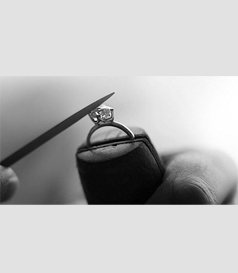
DIAMOND'S COLOR
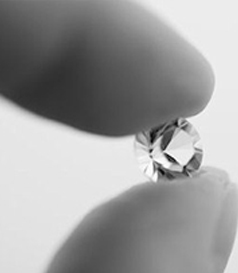
The diamond color evaluation of most gem-quality diamonds is based on the
absence of color. A chemically pure and structurally perfect diamond has no hue,
like a drop of pure water, and consequently, a higher value. D-to-Z diamond
color-grading system measures the degree of colorlessness by comparing a stone
under controlled lighting and precise viewing conditions to masterstones stones
of established color value.
Color grading scale is the industrys most widely accepted grading system.
The scale begins with the letter D, representing colorless, and continues, with
increasing presence of color, to the letter Z.
Many of these color distinctions are so subtle that they are invisible to
the untrained eye; however, these distinctions make a very big difference in
diamond quality and price.
DIAMOND'S CLARITY
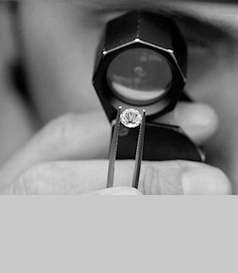
Natural diamonds are the result of carbon exposed to tremendous heat and
pressure deep in the earth. This process can result in a variety of internal
characteristics called inclusions and external characteristics called blemishes.
Evaluating diamond clarity involves determining the number, size, relief,
nature, and position of these characteristics, as well as how these affect the
overall appearance of the stone. While no diamond is perfectly pure, the closer
it comes, the higher its value.
Clarity scale has 6 categories, some of which are divided, for a total of
11 specific grades.
Flawless (FL)
No inclusions and no blemishes visible under 10x magnification
Internally Flawless (IF)
No inclusions visible under 10x magnification
Very, Very Slightly Included (VVS1 and VVS2)
Inclusions so slight they are difficult for a skilled grader to see under 10x
magnification
Very Slightly Included (VS1 and VS2)
Inclusions are observed with effort under 10x magnification, but can be
characterized as minor
Slightly Included (SI1 and SI2)
Inclusions are noticeable under 10x magnification
Included (I1, I2, and I3)
Inclusions are obvious under 10x magnification which may affect transparency and
brilliance
Many inclusions and blemishes are too tiny to be seen by anyone other than
a trained diamond grader. To the naked eye, a VS1 and an SI2 diamond may look
exactly the same, but these diamonds are quite different in terms of overall
quality. This is why expert and accurate assessment of diamond clarity is
extremely important.
DIAMOND'S CUT
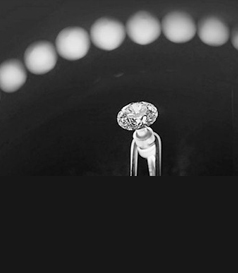
Diamonds are renowned for their ability to transmit light and sparkle so
intensely. We often think of a diamonds cut as shape round, emerald, pear but a
diamonds cut grade is really about how well a diamonds facets interact with
light.
Precise artistry and workmanship are required to fashion a stone so its
proportions, symmetry, and polish deliver the magnificent return of light only
possible in a diamond.
A diamonds cut is crucial to the stones final beauty and value. And of all
the diamond 4Cs, it is the most complex and technically difficult to analyze.
To determine the cut grade of the standard round brilliant diamond the
proportions of those facets that influence the diamonds face-up appearance
are calculated. These proportions allow to evaluate how successfully a diamond
interacts with light to create desirable visual effects such as:
Brightness: Internal and external white light
reflected from a diamond
Fire: The scattering of white light into all the
colors of the rainbow
Scintillation: The amount of sparkle a diamond
produces, and the pattern of light and dark areas caused by reflections within
the diamond
Diamond cut grade also takes into account the design and craftsmanship of
the diamond, including its weight relative to its diameter, its girdle thickness
(which affects its durability), the symmetry of its facet arrangement, and the
quality of polish on those facets.
Cut scale for standard round brilliant diamonds in the D-to-Z diamond
color range contains 5 grades ranging from Excellent to Poor.
DIAMOND'S CERTIFICATION
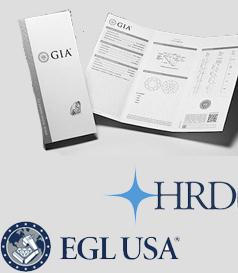
Diamond certificates, or grading reports, as they are known in the diamond
industry, are often called the fifth C, in addition to the well-known 4Cs of
diamond stones: carat weight, cut, color, and clarity.
A diamond certificate is a report created by a team of gemologists. The diamond
is evaluated, measured, and scrutinized using trained eyes, a jewelers loupe, a
microscope,and other industry tools. A completed certificate includes an
analysis of the diamonds dimensions, clarity, color, cut grade, polish,
symmetry, and other characteristics.
